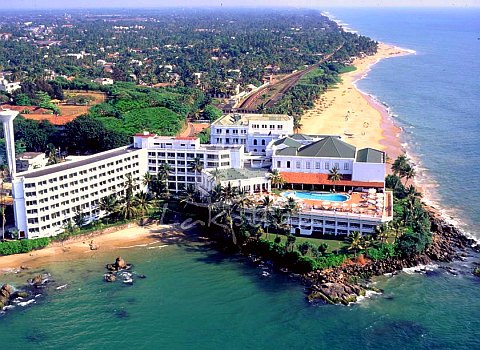
Dehiwala-Mount Lavinia is a newly created city lying immediately south of Colombo, one of the largest cities in Sri Lanka. It is the result of certain key urban suburbs and communities combined for administrative purposes. The centres include Dehiwala and the beach resort of Mount Lavinia. It is also home to Sri Lanka's National Zoological Gardens which remains one of Asia's largest. Dehiwala and Mount Lavinia lie directly south of Colombo 6 (Wellawatte) along the Galle Road artery which runs along the coast down to the south of the country.
The town is largely a middle class and mostly residential suburb that had until now escaped most of the damaging industrialisation of neighbouring cities and urban centres. Famed for its "Golden Mile" of beaches, it has often been a hot spot for tourism and laid back nightlife. It is one of the most liberal regions in Sri Lanka and plays host to the island's annual gay pride and Rainbow Kite Festival.
The city's name is built up around the original residence of Sir Thomas Maitland who was the Governor of Ceylon from 1805–1811. At a welcoming party held in his honour on his arrival in the island he saw Lovina, a local mestizo dancer, whose father was the headman of the troupe. Sir Thomas was smitten by her smile and charms and soon found himself obsessed by her and took every measure possible to see more of her.
As it was unconventional for an unmarried British officer to be seen associating with a local dancing girl, Sir Thomas and his lover met in secret. Legend says she was smuggled into his mansion through a secret tunnel that led from her father's well into a wine cellar in the house.
In 1811, social convention and duty to his king, led Sir Thomas Maitland to leave the country for Malta, where he lived and died as a bachelor. The tunnel was eventually sealed in 1920 and the Gypsy village that surrounded the Governor’s mansion developed into a modern bustling city that took its name from the beautiful Lovina. But the governor’s home, which he named "Mount Lavinia House" and his monument to his only love, has been preserved within the walls and high ceilings of what is today the Mount Lavinia Hotel.
The statue of 'Lady' Lavinia, as the girl later became known, is still found in the middle of a water fountain at the entrance of the Mount Lavinia Hotel.
There are other explanations rooted in geography and the natural surroundings, when it comes to the origin of the name Mount Lavinia. The Sinhalese who lived on the coastal belt had for long named the promontory "Lihiniya Kanda" or "Lihiniyagala" meaning the hill of the sea gull or the rock of the sea gull.
The local name for the town today is Galkissa - Kissa being a somewhat obsolete Sinhala word for rock. Legend takes over once again with the story of a large treasure from a shipwreck being hidden among the rocks here.
Whatever the legends, the town came into official recognition when Governor Maitland used the postal address Mt. Lavinia, Ceylon, in 1805, while writing to the British Secretary of State, Lord Castlereagh.
The city also boasts Saint Thomas' College, one of Sri Lanka's most prestigious primary and secondary schools.